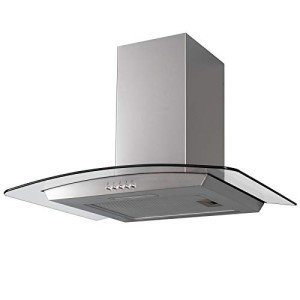
Kitchen Extractor Fan
Add a review FollowOverview
- Founded Date 8 september 1977
- Sectors Publiek Domein
- Posted Jobs 0
- Viewed 3
Company Description
9 Things Your Parents Teach You About Cooker Hoods Uk
A Comprehensive Guide to Cooker Hoods in the UK
When it pertains to modern kitchens, cooker hoods (or range hoods) are a necessary home appliance that combines style and functionality. They not just improve the visual appeal of a kitchen however likewise play an essential role in improving indoor air quality by getting rid of smoke, grease, and odors produced throughout cooking. In the UK, there’s a diverse series of cooker hoods readily available, catering to various preferences and kitchen designs. This post aims to offer a thorough introduction of cooker hoods available in the UK, covering types, functions, advantages, and key factors to consider when choosing the right one for your home.
Types of Cooker Hoods
Understandably, picking the ideal kind of cooker hood is basic to ensuring it fits well within your kitchen space and satisfies your cooking needs. Below is a table summing up the different types of cooker hoods readily available in the UK.

| Kind Of Cooker Hood | Description | Setup Style | Best For |
|---|---|---|---|
| Wall-Mounted | Connected to the wall above the cooker. | Mounted on the wall | Kitchens with a range or oven against a wall. |
| Island | Suspended from the ceiling over an island cooktop. | Ceiling-mounted | Open-plan kitchens with island cooktops. |
| Under-Cabinet | Fits under kitchen cabinets, saving area. | Mounted under cabinets | Small kitchens with restricted area. |
| Freestanding | A standalone unit, incorporating with cabinets. | Floor-mounted | Conventional or rustic kitchen designs. |
| Downdraft | Retracts into the counter top when not in use. | Developed into the countertop | Modern kitchens and those with minimalistic designs. |
Secret Features to Consider
When choosing the perfect cooker hood for your kitchen, there are a number of essential features that can affect efficiency and functionality:
Extraction Type:.a. Ducted: This type requires external ventilation and effectively removes cooking smells.b. Recirculating: Uses filters to clean up the air before recirculating it back into the kitchen; ideal for areas without external ducts.
Filtering System:.a. Metal Grease Filters: Durable and recyclable; can be cleaned easily.b. Charcoal Filters: Used with recirculating hoods; efficient in getting rid of smells but need replacing routinely.
Sound Level: Measured in decibels (dB), consider hoods that run at lower noise levels (below 70 dB) for a quieter cooking experience.
Suction Power: Measured in cubic meters per hour (m THREE/ h), a high suction power is key for reliable smoke and odor removal.
Lighting: Integrated LED lights can improve exposure on your cooking surface.
Control Options: Some models include touch controls, remote control, or even smartphone compatibility for modern convenience.
Design and Finish: From stainless steel to glass and even customizable choices, it’s essential to pick a design that matches your kitchen decor.
Benefits of Using a Cooker Hood
Installing a cooker hood features numerous benefits, not only improving the kitchen environment however likewise enhancing cooking effectiveness. Here are some benefits:
- Air Quality Improvement: Removes impurities and promotes a healthier cooking environment.
- Odor Elimination: Prevents sticking around smells from cooking, enhancing total home environment.
- Minimized Grease Build-up: Helps keep a cleaner kitchen by lowering grease deposits on walls and cabinets.
- Added Light: Often included integrated lighting, enhancing visibility while cooking.
- Visual Appeal: Available in various designs, they can elevate the visual of the kitchen.
Picking the Right Cooker Hood: A Checklist
Before buying, here’s a practical checklist to assist your selection procedure:
- Assess kitchen size and layout.
- Determine chosen setup type (ducted vs. recirculating).
- Determine the needed suction power based on cooking routines.
- Examine noise levels during operation.
- Determine preferred style and product (stainless-steel, glass, and so on).
- Examine for additional features (lighting, controls).
- Think about maintenance requirements (filter types).
Frequently Asked Questions
1. How do I determine the best size of cooker hood for my kitchen?
To determine the ideal size, measure the width of your cooking surface area. The hood needs to be at least as large as the cooktop to successfully record smoke and odors.
2. How often should I change the charcoal filter in a recirculating hood?
Depending upon the use, charcoal filters ought to usually be changed every 3-6 months to ensure effective smell elimination.
3. Is ducted ventilation much better than recirculating?
Ducted systems are usually more efficient in removing smells and wetness, whereas recirculating systems are simpler to install however might not vent steam and odors as completely.
4. Can I set up a cooker hood myself?
While some property owners may go with DIY setup, working with an expert is suggested for ducted installations to ensure correct functionality and safety.
5. Exists a best season to buy a cooker hood?
Sales can frequently be found during seasonal promos, such as Black Friday or New Year’s sales. However, brand-new product releases usually happen in the spring, so off-season may be a great time to discover last year’s designs on clearance.
Whether you’re an avid cook or simply a periodic kitchen user, picking the right cooker hood is an investment that improves your cooking experience, enhances air quality, and matches your kitchen design. By understanding the types, features, and advantages, you can make an educated choice tailored to your specific requirements. Always keep in mind to consider performance together with design to ensure your cooker hood ends up being a valuable property in your kitchen for years to come.